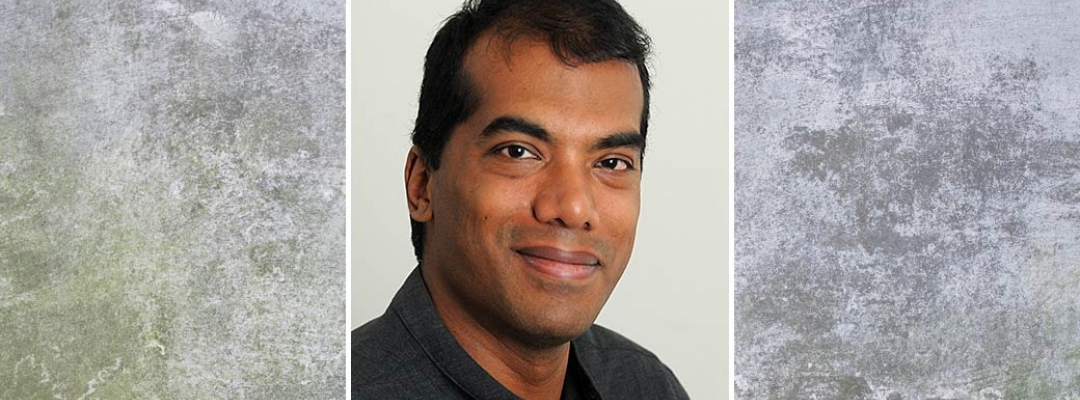Ramu Nagappan is an Assistant Dean at UC Berkeley Extension, and Director of the Center for Instructional Excellence. Ramu earned his A.B. from Princeton University and Ph.D. in English from UC Berkeley. For 13 years, he has overseen a wide range of programs in the arts, humanities and social sciences. He is also responsible for the Fall Program for Freshmen, an undergraduate program with a cohort of 700 students.
Previously, Ramu taught writing and managed other programs at the UC San Francisco School of Medicine. His research interests include South Asian history and literature, higher-education pedagogy and the medical humanities. He is the author of Speaking Havoc: Social Suffering and South Asian Narratives.
What inspires you about “instructional excellence” and what prompted the formation of the Center?
I’ve done a fair amount of teaching in my career, working with high-school students, undergraduates and professionals. I’ve also devoted a lot of time to my work with teachers of all kinds. We all know that education is a very dynamic field these days, and the energy and new thinking are all very exciting.
When UC Berkeley Extension’s Dean asked me to become the founding director of the Center for Instructional Excellence (CIE), I jumped at the opportunity. For more than 120 years, Extension has welcomed learners of all kinds. CIE presents a chance to reflect on our current practice and start rich conversations about how we can serve those learners even more effectively.
What are the primary goals of the center?
There are four key areas for CIE.
First, program and curriculum development. We want to be sure that our curricula are up-to-date and reflect the most recent trends in every field.
Second, we focus on instructor development, including recruitment, orientation and ongoing consultation and support.
Third, we are investigating learning innovation and student engagement. We ask ourselves whether our pedagogies incorporate the latest thinking about how students learn.
Fourth, we employ data-driven evaluation and assessment. During the past two years, we’ve rolled out online course evaluations, and we’re making increased use of data from our students.
About how many instructors does the center support? How many teach online versus in the classroom?
More than 700 instructors teach at Extension each year in various types of programs. Many of them have taught for us before, but we also recruit quite a few new ones, too. We list teaching position openings on Extension’s website.
In the programs we offer to the general public, about 69 percent of our instructors teach classroom-based courses, 21 percent teach fully online courses, and 10 percent either teach hybrid courses or teach in both classroom and online formats.
That’s quite a diverse population! How does the Center plan to meet the professional development needs of all of those types of instructors?
Even before CIE was created, we had ongoing events for our instructors, including professional-development workshops and instructors. We plan to offer more events, tailored to our instructors needs.
We will soon send out a survey to all of our active instructors, asking for their feedback on a wide range of issues, including professional development.
Finally, our valued partners on the main campus—the Center for Teaching & Learning (CTL) and the Academic Innovation Studio (AIS)—sponsor numerous workshops, symposia and talks throughout the year. Extension instructors are encouraged to join their mailing lists and take advantage of those opportunities.
Our extraordinary opportunity and challenge is the great variety of students who are now seeking higher education and continuing education.
What are the biggest instructional opportunities and challenges at Extension?
Our extraordinary opportunity and challenge is the great variety of students who are now seeking higher education and continuing education. We can’t just pay lip service to the idea of “non-traditional” learners. We need to be nimble and aware of our students needs, using formats, credentials and technologies that support their very diverse goals.
We have to innovate all the time, but we have to acknowledge the challenges our instructors face in their classroom and online courses. Students start a class with different backgrounds, goals and levels of preparation. Our instructors have to create a coherent plan to address all of them.
Are there any learning or pedagogical innovations that are in development at Extension?
We are working to promote better student outcomes in our online Continuous Enrollment (CE) courses. The CE format is very popular because it allows students to start a class at any time and work at their own pace; they have six months to complete.
However, the lack of a formal cohort means that some students fall behind or lose motivation. We need to nudge our students in news ways. We’d like to be sure all of our students complete the courses they’ve enrolled in. We are exploring a variety of tools and technologies to help us achieve that level of student success.
The Center oversees the online student course-evaluation process. Is there any information you’d like to share with instructors about the evaluation system or process?
Many institutions report challenges with response rates when they switch from paper to online evaluation systems, but we had to make this shift because of a growing number of online programs and courses. An instructor’s encouragement is the best way to increase response rates.
For classroom courses, we’ve created some suggestions for how instructor’s can increase response rates, and we’re also working on an integration between the evaluation system and Canvas for both online and classroom courses that will have pop-up reminders for completing the evaluations upon log in.
Is there anything else you’d like our instructors to know about CIE?
So much of our work is collaborative! We bring together lots of stakeholders across Extension and the campus.
We would love to hear your ideas, feedback and observations! If you are interested in sharing an Extension teaching success story or writing an article on teaching best practices for our newsletter, please email us at teach-extension@berkeley.edu. We’re thrilled to support this community!
